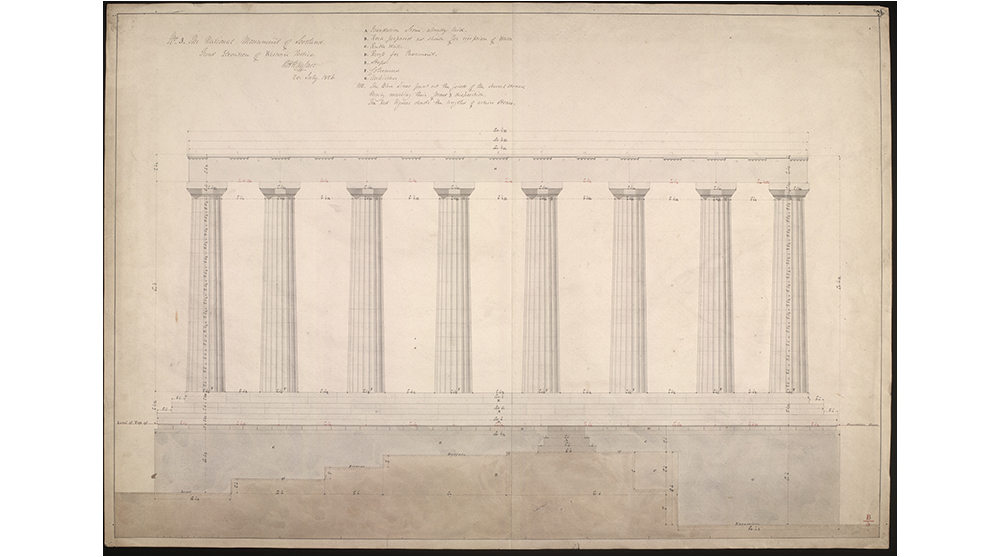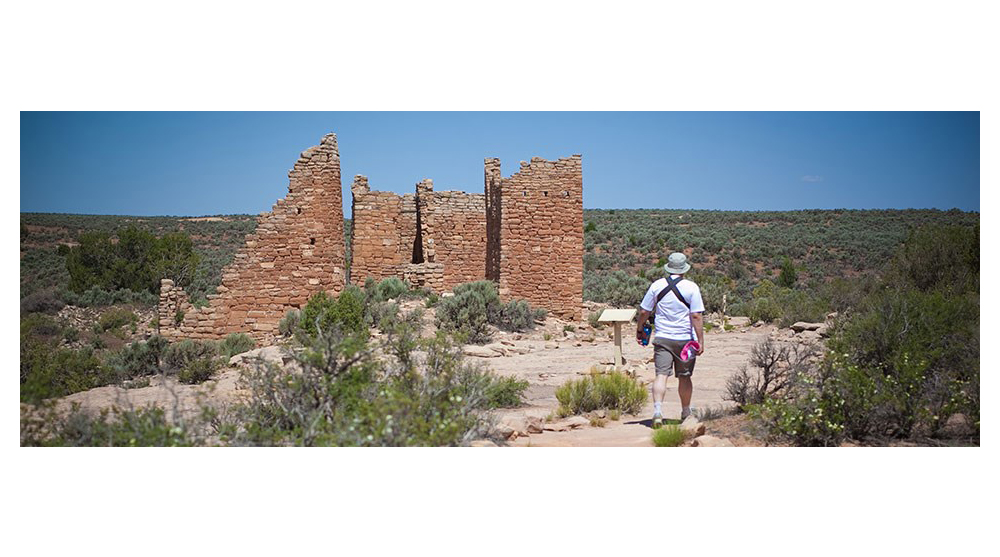National parks, whether large or small, are typically a key point of architectural interest. Whether built to commemorate a person or an event, national parks are often the home of important national monuments. These could take on the form of historical buildings, sculptures, or even ancient archeological finds that have since been protected and claimed as a national monument.
The National Monument of Scotland
The National Monument of Scotland was built to honor those who died during the Napoleonic Wars. Image source
The National Monument of Scotland is the country’s national memorial to the Scottish military men who died during the Napoleonic Wars, and bears the inscription "A Memorial of the Past and Incentive to the Future Heroism of the Men of Scotland".
The monument is located at the top of Calton Hill in central Edinburgh, Scotland, and is included in the city’s UNESCO World Heritage Site. Calton Hill is home to the Scottish Parliament Building as well as other iconic monuments such as the Nelson Monument, the Dugald Stewart Monument, the old Royal High School, the Robert Burns Monument, the Political Martyrs' Monument and the City Observatory.
The National Monument of Scotland was designed by Charles Robert Cockerell and William Henry Playfair between 1823-1826, and was modelled on the Parthenon in Athens. The original plans included extensive catacombs in the area supporting the main structure. They were to act as a “Scottish Valhalla” and provide a burial place for significant figures. However, three years after construction began in 1826, the promised funding was not received and the monument was left unfinished.

Thought of as the Scottish Valhalla, the National Monument of Scotland was never completed. Image source
There were several proposals to complete the monument throughout the 20th century including a monument to Queen Victoria, a new Scottish National Gallery, and a new Scottish Parliament building. None of these suggestions were fully supported in terms of both funding and local enthusiasm, however the monument was repaired in 2008, reposition one of the stone lintels at a cost of over £100,000.
Martin Luther King Jr. Memorial
The Martin Luther King Jr Memorial was opened to the public in 2011 after 20 years of planning. Image source
Located in West Potomac Park, a national park in Washington, D.C., the Martin Luther King Jr Memorial covers a total of four acres and was first opened to the public in 2011 after more than 20 years of planning, fund-raising, and construction. The main feature is the Stone of Hope which is a granite statue of the Civil Rights Movement leader carved by sculptor Lei Yixin, who drew inspiration for the design from Martin Luther King Jr.’s iconic “I Have A Dream” speech; namely the line "Out of the mountain of despair, a stone of hope."
The national park in the US capital city includes parkland that extends south of the Lincoln Memorial Reflecting Pool - from the Lincoln Memorial to the grounds of the Washington Monument - and is the site of several national landmarks. For example, Korean War Veterans Memorial, Jefferson Memorial, Franklin Delano Roosevelt Memorial, and George Mason Memorial as well as the Martin Luther King Jr. Memorial.
Hovenweep National Monument

Hovenweep National Monument is an example of ancient architecture in southeastern Utah. Image source
Incorporated as part of the US National Park System in 1923, Hovenweep National Monument is an amazing piece of architecture that far pre-dates the formation of the United States.
Located in southwestern Colorado and southeastern Utah, Hovenweep National Monument is known for being home to six groups of Ancestral Puebloan villages. Evidence suggests that humans made the area their home from anywhere between 8000 to 6000 BCE all the way through until 200 CE.
The ancient Pueblo ruins feature towers that are reminiscent of European castles, and are thought to have been built at roughly the same time as medieval fortresses. The most accessible of the six units of ruins is Square Tower, where several well-preserved structures are located, and include castles, towers, check dams (for irrigation), cliff dwellings, pueblos and houses, all with Petroglyphs (rock art) decorating the area.
Many theories attempt to explain the use of the buildings at Hovenweep. The striking towers might have been celestial observatories, defensive structures, storage facilities, civil buildings, homes or any combination of the above. While archeologists have found that most towers were associated with kivas, their actual function remains a mystery.
Gauja National Park Footbridge competition
Known for the scale of diverse wildlife and varied landscapes within, Gauja National Park is a popular tourist attraction in one of the greenest and naturally stunning countries in the world. Latvia’s largest national park celebrates its 45th anniversary by tasking architecture enthusiasts with designing an entryway footbridge that is welcoming and innovative.
Top 3 Reasons Why You Should Enter Architecture Competitions
Curious about the value of architecture competitions? Discover the transformative power they can have on your career - from igniting creativity and turning designs into reality, to gaining international recognition.
Learn more



























